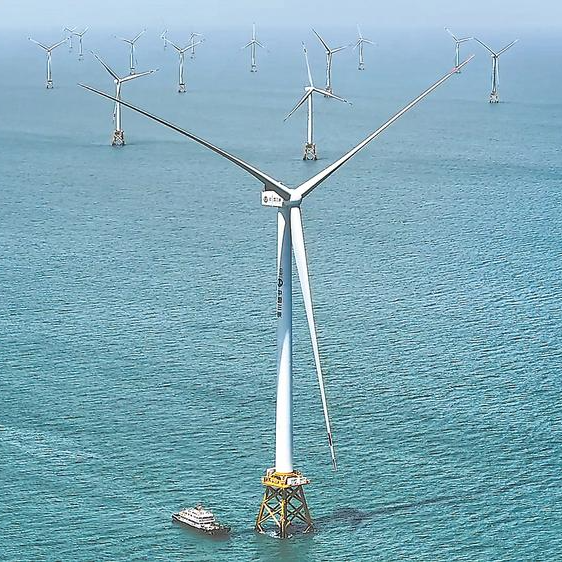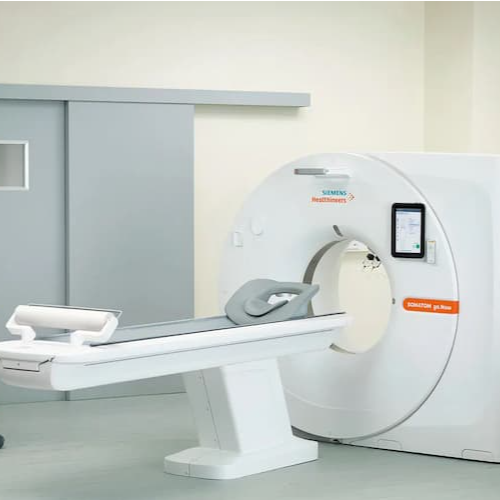
Introduce
Glass fiber composites are composite materials composed of glass fibers as reinforcing phases dispersed in a polymer matrix. This material combines the high strength and rigidity of glass fibers with the flexibility and processing convenience of the polymer matrix to form a new material with superior comprehensive performance. Glass fibers are usually extremely fine filaments drawn from silica (SiO₂) and other minerals after melting, and their diameters can range from a few microns to tens of microns. These fibers are combined with a resin matrix by weaving, lamination or other methods to form the final product form, such as sheets, pipes or custom-shaped parts.
With the advancement of science and technology and the acceleration of industrialization, the demand for high-performance materials is growing. Especially in the fields of construction, automobiles, aerospace, marine engineering, etc., traditional metal materials are gradually unable to meet the requirements of modern industrial development due to their heavy weight, high cost, and easy corrosion. In this context, glass fiber composites have become an ideal choice to replace traditional materials with their unique physical, chemical and mechanical properties. In addition, the global emphasis on environmental protection and sustainable development has also promoted the research and application of more environmentally friendly and energy-saving materials.
In-depth research on glass fiber composites will not only help promote technological innovation in related industries, but also promote the realization of energy conservation and emission reduction goals. Through the study of such materials, we can develop lighter, more durable, safer and environmentally friendly products, which is of great significance for improving product quality, reducing production costs, extending service life and reducing waste. At the same time, with the continuous deepening of research on glass fiber composites, its potential application areas are also expanding, from traditional industrial manufacturing to emerging high-tech industries, showing a wide range of application prospects. Therefore, whether from an academic perspective or from a practical application perspective, it is very necessary to strengthen the research on glass fiber composites.


History and Development of Glass Fiber Composites
Origin and development history
The history of glass fiber composites can be traced back to the early 20th century, but true glass fiber reinforced plastics (GFRP, commonly known as fiberglass) were developed during World War II to meet the needs of the aviation industry. In the 1940s, due to the surge in demand for lightweight, high-strength materials, glass fiber was introduced as a reinforcement material into the resin matrix, resulting in the earliest glass fiber composites. Since then, with the continuous advancement of materials science and technology, glass fiber composites have begun to develop rapidly, forming a wide variety of products and are widely used in various industrial fields.
After entering the 1950s, with the emergence of high-strength and high-modulus fibers such as carbon fiber, graphite fiber and boron fiber, the performance of composite materials has been further improved. In the 1970s, the emergence of aramid fiber and silicon carbide fiber made the application range of composite materials more extensive, not only limited to civil and commercial fields, but also extended to military equipment and space exploration. At the same time, with the advancement of synthetic resin technology, the choice of matrix materials has become more diverse, including epoxy resin, polyester resin, polyurethane resin, etc., which have greatly enriched the performance characteristics of glass fiber composites.
Main application areas
Glass fiber composites are widely used in many fields due to their unique properties. In the construction industry, it is used to manufacture building materials such as roof tiles, door and window frames, and wall panels. Its light weight, high strength, and corrosion resistance improve the safety and aesthetics of buildings. In the automotive industry, glass fiber composites are used for body panels, interior parts, etc., which improve fuel efficiency by reducing vehicle weight and enhance vehicle safety. In the aerospace field, due to its excellent fatigue resistance and temperature resistance, it is used to make aircraft wings, fuselages, and other key structural components, bringing greater reliability and longer service life to aircraft.
In addition, glass fiber composites also play an important role in marine engineering, electronics and electrical, sports equipment, medical equipment, and other fields. For example, offshore wind turbine blades use the high strength and light weight of glass fiber composites to improve power generation efficiency; in the medical industry, it is used to make orthopedic appliances and surgical instruments, providing patients with a better treatment experience.
Current Global Market Overview
At present, the global glass fiber composite material market shows a rapid growth trend. With the acceleration of global economic integration, countries have continuously increased their investment in infrastructure construction and manufacturing upgrading, which provides a broad application space for glass fiber composite materials. Especially in China, the United States, Europe and other places, the glass fiber composite material industry is booming due to the support of government policies and the promotion of technological progress.
According to the latest statistics, in the first quarter of 2024, the global glass fiber yarn production reached 758,700 tons, an increase of 6.49% year-on-year, showing a strong growth momentum. The reason behind this growth is mainly due to the release of new production capacity and the continued increase in market demand. In China, Shangyou County is a typical example. The region has successfully made the glass fiber industry one of the important pillars of the local economy by optimizing the industrial structure and strengthening the industrial chain, and is transforming towards higher value-added products and services.
Main characteristics of glass fiber composite materials
As an important engineering material, glass fiber reinforced plastics (GFRP) plays an indispensable role in modern industry. Its unique combination of properties makes it widely used in many fields.
Physical properties
High strength and lightweight
One of the greatest advantages of fiberglass composites is their high specific strength. Compared with traditional metal materials, it can significantly reduce weight while ensuring sufficient strength. This is particularly important in industries such as aviation and automobiles that need to reduce their own weight to improve energy efficiency.
Temperature resistance
Glass fiber itself has good thermal stability and can maintain its mechanical properties over a wide temperature range. Different resin matrices give the material different temperature resistance ranges, making it suitable for various environmental conditions from low temperature to high temperature.
Insulating properties
The presence of the resin matrix gives fiberglass composites good electrical insulation properties, which makes them very suitable for use in housings or internal components of electrical equipment, such as circuit board supports, etc.
transmittance
In some specific applications, such as radome or wireless communication equipment, materials are required that can transmit electromagnetic waves without affecting signal transmission. Fiberglass composites have this property because they are non-conductive.
Chemical properties
Corrosion resistance
Glass fiber composite materials have strong resistance to chemical substances such as acids and alkalis, and are not prone to degradation caused by chemical reactions. This has obvious advantages in the fields of chemical equipment manufacturing, sewage treatment facilities, etc.
Anti-ultraviolet aging
Under long-term outdoor use conditions, glass fiber composite materials with appropriate anti-UV agents added can effectively prevent aging caused by ultraviolet radiation and extend the service life of the material.
Water resistance
Due to the tight structure formed between the resin matrix and the glass fiber, the material has good waterproof performance and is not easy to absorb water and swell or undergo other physical changes.
Mechanical properties
Impact toughness
Glass fiber composite materials can absorb a certain amount of energy and are not easily broken when impacted by external forces. This is due to the interaction mechanism between the fibers and the matrix.
tensile strength
The maximum stress a material can withstand in tension reflects its load-bearing capacity. Glass fiber composites can exhibit high tensile strength in specific directions due to the directional arrangement of fibers.
fatigue life
Under the cyclic stress of repeated loading and unloading, the fatigue life of the material determines whether it can work stably for a long time. By optimizing the design and selecting an appropriate resin system, the fatigue resistance of glass fiber composites can be significantly improved.
Process characteristics
Easy to shape
Glass fiber composites can be processed through a variety of molding processes, such as hand lay-up, compression molding, winding molding, etc. These processes allow the material to be easily prepared into the desired shape and size.
Strong designability
Unlike traditional materials, glass fiber composites allow designers to adjust the fiber content, distribution method and matrix type according to specific application requirements to obtain the best performance combination. This flexibility enables the material to better adapt to diverse design requirements.
Various surface treatments
Through surface treatment technologies such as painting and coating, not only can the appearance quality be improved, but also the weather resistance and corrosion resistance of the material can be further improved.
Application Status of Glass Fiber Composite Materials
In the field of construction, glass fiber composite materials have become an ideal building material due to their light weight, high strength, corrosion resistance, and good weather resistance. It can be used to manufacture building components such as roof tiles, exterior wall decorative panels, window frames, door frames, etc. In addition, due to its good insulation properties, glass fiber composite materials are also widely used in building thermal insulation materials to help improve the energy efficiency of buildings. For example, in the construction of venues for the Beijing Olympics and the Shanghai World Expo, a large number of glass fiber composite materials were used to make roofs, walls, etc., which not only beautified the appearance but also enhanced the functionality.
In the field of aerospace, the requirements for materials are extremely stringent. Not only weight factors must be considered, but also multiple performance indicators such as strength, heat resistance and corrosion resistance must be taken into account. Glass fiber composites have been widely used in this field due to their excellent comprehensive performance. For example, in the manufacture of commercial and military aircraft, glass fiber composites are used to make key structural components such as wings, fuselages, and tails. In addition, in the manufacture of spacecraft such as rockets and satellites, glass fiber composites also play an important role, such as being used to manufacture heat shields, fairings and other parts to protect spacecraft from high temperature environments.
In the electrical and electronic industry, glass fiber composites are mainly used as housing materials or circuit board substrates for electronic devices. Due to its good electrical insulation properties, it can effectively prevent current leakage and ensure the safety of equipment operation. At the same time, it also has a certain ability to shield electromagnetic interference, which is essential to ensure the normal operation of electronic equipment. In addition, glass fiber composites are also used to manufacture the housings of various electronic products, such as laptops, mobile phones, etc., which are both light and strong, meeting the dual needs of modern consumers for the appearance and function of electronic products.
The marine environment is complex and changeable, and the requirements for materials are very high. Glass fiber composite materials are widely used in the field of marine engineering due to their corrosion resistance and seawater erosion resistance. For example, in shipbuilding, glass fiber composite materials are used to make hulls, decks and other parts, which can greatly extend the service life of ships. In addition, in the construction of offshore oil drilling platforms, glass fiber composite materials also play an important role. They are used to make pipelines, storage tanks and other equipment, effectively resisting the erosion of seawater and corrosive chemicals.




Develoment Trend
New technologies and new materials
Nano-enhancement technology
The development of nanotechnology provides new possibilities for improving the performance of glass fiber composite materials. By adding nanoscale fillers to the matrix resin, the mechanical properties, wear resistance and thermal stability of the material can be significantly improved. For example, using carbon nanotubes or nanoclay as a reinforcing phase not only enhances the strength of the material, but also improves its electrical and thermal conductivity.
Eco-friendly materials
As the global awareness of environmental protection increases, the development of green and sustainable materials has become an inevitable trend. Bio-based resins have attracted widespread attention as alternatives to traditional petrochemical resins. This type of resin is derived from renewable resources such as vegetable oils, which not only reduces dependence on fossil fuels, but is also more easily degraded by the natural environment after the life cycle.
Intelligent and self-healing materials
Smart materials refer to those materials that can sense changes in the external environment and respond accordingly. In the field of glass fiber composite materials, researchers are trying to embed sensors inside the material so that it can monitor its own condition. In addition, the development of self-healing technology also provides new ideas for the long-term use of materials. By adding microencapsulated repair agents to the material, when cracks appear on the surface of the material, these microcapsules burst and release the repair agent, thereby automatically filling the damaged area.
Multifunctional composite materials
With the diversification of application requirements, single-functional materials can no longer meet market requirements. Researchers are working on developing composite materials that integrate multiple functions, such as building materials that have fire protection, sound insulation, heat insulation and other functions, or electronic equipment housing materials that have both high strength and electromagnetic shielding effects.
Expansion of application areas
New energy vehicles
With the rapid growth of the electric vehicle market, the demand for lightweight and high-strength materials is increasing. Glass fiber composites have great potential in the body manufacturing and battery box packaging of new energy vehicles due to their excellent performance. By using this material, the weight of the vehicle can be effectively reduced, the cruising range can be increased, and the safety performance of the vehicle can be enhanced.
Wind power generation
As a clean and renewable energy source, wind energy has developed rapidly around the world in recent years. Glass fiber composites play an important role in the manufacture of wind turbine blades. Due to their light weight and high strength, they can help improve the working efficiency of wind turbines and reduce energy consumption.
Space exploration
With the rise of commercial space activities, higher requirements are placed on efficient and reliable spacecraft materials. Glass fiber composites have obvious advantages in the manufacture of launch vehicles, satellite shells and other components due to their good heat resistance and radiation resistance. In addition, it is also used to make astronauts’ protective equipment to cope with extreme space environments.
Smart wearable devices
With the development of Internet of Things technology, smart wearable devices are becoming more and more popular. Glass fiber composites have become an ideal choice for making smart watches, fitness bracelets and other products due to their good mechanical properties and processability. In particular, by combining nanotechnology and intelligent functions, the user experience of the product can be further enhanced.
Medical Health
In the medical field, glass fiber composite materials are widely used in the manufacture of prostheses, corrective devices and surgical instruments due to their good biocompatibility and high strength. In addition, through surface modification, the material can also be given additional functions such as antibacterial and antifouling to better serve the patient’s rehabilitation process.



In Conclusion
In conclusion, fiberglass mesh is a versatile and dependable material used in various industries for reinforcement, waterproofing, and more. Aiswix, with its commitment to quality, reliability, and customer satisfaction, is a trusted partner for businesses worldwide. Whether you’re in need of fiberglass mesh for concrete reinforcement, mosaic tiles, or any other application, Aiswix has you covered.
Are you ready to explore the world of fiberglass mesh and discover how it can benefit your projects? Contact Aiswix today, and let us be your partner in quality and reliability!




